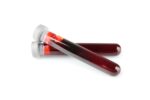Same C5a Complement Protein Mechanisms Found in aHUS, COVID-19
Written by |

C5a, a terminal product of the complement system, can, by itself, promote blood vessel dysfunction and the subsequent formation of blood clots seen in people with atypical hemolytic uremic syndrome (aHUS), a study shows.
Notably, the same C5a-induced molecular mechanisms were detected among patients with severe COVID-19 and whose infection triggered complement system activation.
These findings highlight C5a as a common blood clotting-inducer in diseases characterized by an overly active complement system and suggest that suppressing C5a may be a new and improved therapeutic approach for such conditions, according to the researchers.
In contrast to the approved complement-suppressing therapy Soliris (eculizumab) — which prevents C5 from being cleaved into C5a and C5b — blocking C5a would preserve the formation of C5b-9, a complex made of C5a and other proteins that is critical in controlling bacterial infections, the team said.
Notably, Tavneos (avacopan), a C5a-suppressing oral therapy from ChemoCentryx, has been approved as an add-on treatment for ANCA-associated vasculitis (AAV), a rare condition associated with an overly active complement system.
The study, “C5a and C5aR1 are key drivers of microvascular platelet aggregation in clinical entities spanning from aHUS to COVID-19,” was published in the journal Blood Advances.
A part of the body’s immune system and its first line of defense, the complement system comprises a set of more than 20 blood proteins that mark microbes for targeted destruction by immune cells.
“Unrestrained activation of the complement system till the terminal products, C5a and C5b-9, plays a [damaging] role in acute and chronic inflammatory diseases,” the researchers wrote.
An overly active complement pathway also contributes to a number of blood-related diseases, such as aHUS, a rare genetic disorder characterized by the formation of blood clots in small blood vessels. It leads to organ damage, especially in the kidneys.
When activated or damaged, endothelial cells — those that line blood vessels — lose their anti-blood clotting, or anti-thrombogenic properties, thereby promoting the formation of blood clots. A hyperactive complement system contributes to endothelial cell dysfunction, favoring blood clot formation.
Alexion Pharmaceuticals’ Soliris, a C5-targeting therapy, has been shown to effectively lessen aHUS and to reduce the risk of blood clotting-related events in other conditions characterized by defective control of complement activation.
Soliris recently was proposed as a potential treatment for “limiting the exaggerated complement activation that is associated with widespread endothelial damage and systemic [excessive blood clotting] that characterize severe forms of SARS-CoV-2 respiratory infections (COVID-19),” the researchers wrote.
However, C5-suppressing agents prevent the formation of both terminal complement pathway products, C5a and C5b-9, thereby increasing the risk of infections.
“A better understanding of the role of C5a/C5aR1 and C5b-9 in [the formation of blood clots] in humans could be instrumental in defining therapeutic approaches that will specifically target either of the two terminal complement products, thus limiting the risk of infections,” the researchers wrote.
Of note, C5aR1 is the receptor of C5a and it is their interaction that promotes the activation of downstream signaling cascades.
To this end, a team of researchers in Italy conducted a series of experiments with blood samples from 11 aHUS patients and 20 healthy individuals.
Five of these aHUS patients had participated in a Phase 2 trial, called ACCESS (NCT02464891), which tested a 15-day treatment with Tavneos in six people with end-stage kidney disease due to aHUS.
Results showed that exposing lab-grown human epithelial cells to blood from aHUS patients — who were all in remission — promoted the formation of C5b-9 deposits and a more pronounced increase in C5a levels relative to blood from healthy people.
Patients’ blood also reduced endothelial cells’ anti-thrombogenic properties, as their surface became covered by clumps of platelets — tiny cell fragments that help in the formation of blood clots. Notably, this effect was completely reversed with the addition of Tavneos, while treatment with an agent previously reported to block aHUS blood-induced C5b-9 deposits exerted only a partial effect.
Similar results were obtained when endothelial cells were exposed to the blood of aHUS patients after completing Tavneos treatment in ACCESS.
These findings suggest that C5a/C5aR1 signaling, rather than C5b-9 formation, is the main contributor to blood clot formation in aHUS.
In agreement, adding C5a to blood from healthy people was sufficient to “fully recapitulate the pro-thrombotic effect of aHUS [blood],” the researchers wrote.
These results highlight that “C5a/C5aR1 interaction on the endothelium may favor platelet adhesion and aggregation even in the absence of abnormalities in complement alternative pathway regulation,” which are the cause of aHUS, they added.
Mechanistic studies revealed that C5a directly promotes the release of von Willebrand factor (vWF), a major blood clotting protein, and P-selectin, an adhesion molecule, by endothelial cells. This favors “further vWF binding on the endothelium and platelet adhesion and aggregation,” the team wrote.
Additionally, exposure of lab-grown endothelial cells to the blood of six people with severe COVID-19 who experienced excessive complement system activation resulted in comparable results — including the same C5a-induced mechanisms — to those obtained with blood from aHUS patients.
This supports the hypothesis that “C5a/C5aR1 signaling in endothelial cells is a common pro-thrombogenic effector spanning rare genetic diseases and viral infections,” the researchers wrote, adding that these findings “may have clinical implications.”
Potential advantages of selectively blocking C5a/C5aR1 over C5 suppression include the preservation of the formation of the C5b-9 complex, “which plays a key role in controlling several bacterial infections,” the team wrote, and the suppression of C5a-mediated recruitment of immune cells to damaged organs that increase the production of pro-inflammatory and pro-thrombotic factors.
Still, further studies are needed to assess the role of C5b-9 in kidney injury in aHUS and in COVID-19 patients, the team noted. Future research also should focus on the effects of targeting the C5a-mediated mechanisms, such as the release of vWF and P-selectin by endothelial cells.






